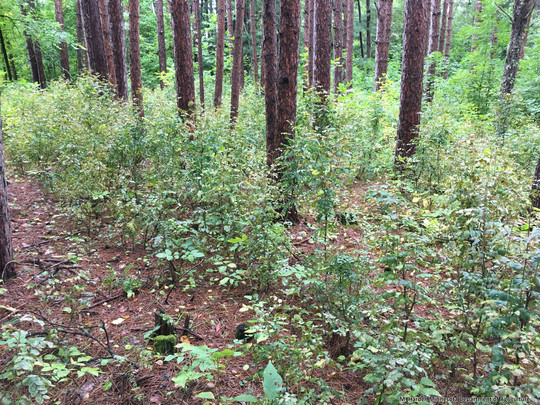|
March 31, 2020
April Weed of the Month: Siberian Peashrub
Mari Hardel, Minnesota Department of Agriculture
Siberian peashrub, Caragana arborescens, was added to Minnesota’s Noxious Weed List in 2020. Native to cold climates in eastern Asia, Siberian peashrub can grow up to 18 feet tall and has compound leaves 2-4 inches long with 8-12 pair of leaflets. It produces yellow flowers in May or June which ripen into slender brown seed pods that burst in early fall, dispersing seeds. Seeds may also be dispersed by birds and animals.
 Siberian peashrub flowers, leaves, and bark.
Click here to download the image.
Often used as an ornamental shrub, windbreak, or wildlife planting, Siberian peashrub grows well in sun and thrive in poor soils. However, shrubs can escape cultivation and have been found forming dense thickets in forest understories, edge habitats, and savannas across Minnesota. As a member of the legume family, Siberian peashrub can take advantage of disturbed or poor soils and alter soil chemistry due to nitrogen fixing properties and allelopathy – the release of chemicals inhibiting other species’ growth. Shrubs thrive in canopy gaps and shade out or displace native species.
As a restricted noxious weed in Minnesota, Siberian peashrub is no longer legal to sell and plant in the state (with the exception of the cultivar ‘Green Spires’, Caragana ‘Jefarb’). Transporting the propagating parts of a restricted noxious weed is not allowed. Therefore, anyone considering removal of these shrubs should be careful to not move plants with seeds to new locations. Leaving cut shrubs onsite is the best option. After cutting, plants can re-sprout and will either need to be treated with herbicide or completely dug out of the soil. The Minnesota Department of Natural Resources lists some native substitutes to Siberian peashrub on their website.
 A Siberian peashrub infestation in a pine forest in Clearwater County, Minnesota.
Click here to download the image.
Many naturalizing populations of Siberian peashrub have not been documented yet. If you suspect that you have found Siberian peashrub plants that have escaped cultivation, you can report directly to EDDMapS website (eddmaps.org) through their Great Lakes Early Detection Network mobile app. Please report only naturalizing shrubs, not planted Siberian peashrub.
MEDIA: For more information on Weed of the Month, contact Allen Sommerfeld, MDA Communications, at allen.sommerfeld@state.mn.us or 651-201-6185
Having trouble viewing this email? View it as a Web page.
|